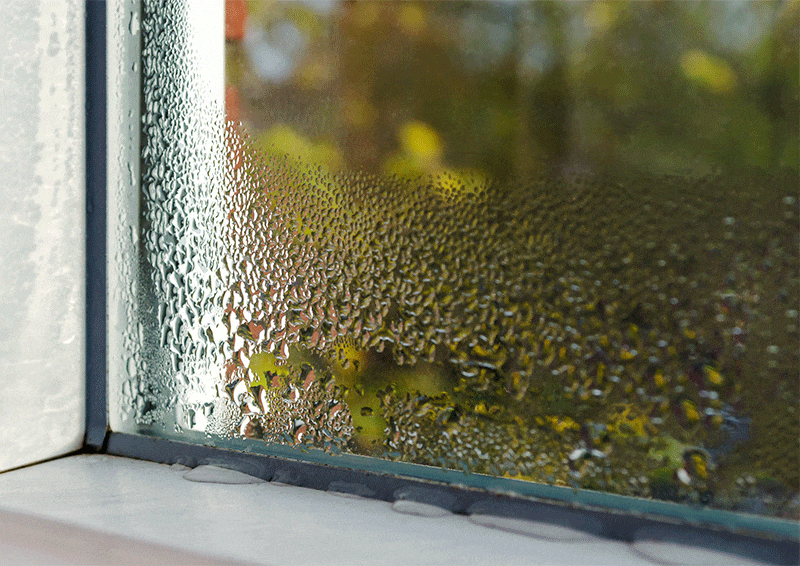What Is Mold?
Molds are a type of fungi naturally found both indoors and outdoors. Warm and damp conditions in your indoor space help mold to grow, resulting in mold spores in indoor air. Molds spread by producing tiny reproductive cells called spores that waft through the air. Mold spores usually cannot be seen without magnification. In general, damp and mouldy environments can lead to various medical issues, especially for individuals sensitive to the allergens that molds generate.
Black mold is a type of fungi considered more toxic than other types of mold. However, contrary to popular belief, Black Mold isn’t any more toxic than other molds. In this blog, we’ll take a closer look at what makes Black Mold different, the various health symptoms it may cause and
What Is Black Mold?
There is no single “black mold” type — many molds are black. When that word is used, it is often referred to a kind of mold called Stachybotrys chartarum, also known as Stachybotrys atra. The Centers for Disease Control and Prevention (CDC) state that people do not need to identify which type of mold is growing in their home or another building. All molds are biohazards that can produce toxins and should be removed immediately when found.
Black mold is a type of fungus that can grow in damp or humid environments, such as bathrooms, kitchens, furnace areas/basements, and crawl spaces. It has a distinctive black or greenish-black appearance and a slimy texture. Black mold can produce toxic substances called mycotoxins – mold poisoning, which can have serious health effects on humans and pets. Only certain molds are toxigenic and produce toxins, specifically mycotoxins. Hazards presented by molds that may produce mycotoxins should be considered the same as other common molds which can grow in your house.
How Does Black Mold Affect Indoor Air Quality?
Like other mold types, black mold can significantly impact indoor air quality. Mold spores can travel through the air and be inhaled, leading to respiratory problems and other health issues. When black mold is present, it can also contribute to a musty odour in indoor spaces. Stachybotrys chartarum causes sick-building syndrome, where toxins released by the fungus cause people to feel unwell. Moreover, black mold can cause significant damage to buildings and structures, as it feeds on organic materials such as wood and drywall. Over time, this can lead to structural damage and decreased indoor air quality.
How To Identify Mold Indoors
1. Dark Spots or Clusters
Look for spots or clustered growths, especially in warm, moist rooms.
2. Musty or Sour Smell
You may be able to identify mold by a musty smell.
3. Allergies or Asthma
If you experience asthma attacks or allergy symptoms in your home, that may indicate mold presence.
4. Potential Causes
Look for reasons for mold growth, like a leak, water damage, lack of ventilation, or old food, papers, or wood.
How Mold Effects Health

People with chronic illnesses or immune system problems may be more likely to get infections from certain molds, viruses, and bacteria. Exposure to molds can cause symptoms such as:
- Respiratory problems
- Headaches
- Nausea
- Body aches
- Fatigue
- Mood swings
In more severe cases, allergic conditions caused by mold exposure may cause:
- Mold-induced asthma. Breathing in spores can trigger an asthma flare-up in people allergic to mold. If you have a mold allergy and asthma, be sure you have an emergency plan in case of a severe asthma attack.
- Allergic fungal sinusitis. This results from an inflammatory reaction to fungus in the sinuses.
- Allergic bronchopulmonary aspergillosis. This reaction to fungus in the lungs can occur in people with asthma or cystic fibrosis.
- Hypersensitivity pneumonitis. This rare condition occurs when exposure to airborne particles such as mold spores causes lung inflammation. It can be triggered by exposure to allergy-causing dust at work.
Can you Prevent Black Mold?
Preventing black mold growth is the best way to protect IAQ. There are several steps that you can take to prevent black mold from growing in your home or workplace:
- Humidity levels should not exceed 50%
- Use exhaust fans in bathrooms and kitchens to reduce moisture.
- Fix any leaks or water damage promptly.
- Clean and dry any areas affected by water or moisture within 24-48 hours.
- Use dehumidifiers in damp areas, such as basements and crawl spaces.
- Increase ventilation to reduce spores indoors.
Do Air Purifiers Help With Mold?
In particular, HEPA filters must meet strict efficiency standards and capture a minimum of 99.97% of pollutants down to 0.3 microns in size. “Mold spores are usually under 40 microns in size, so air purifiers with HEPA filters can usually filter out airborne mold spores,” states allergist Anjuli Mehrotra, M.D.


